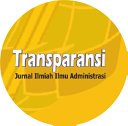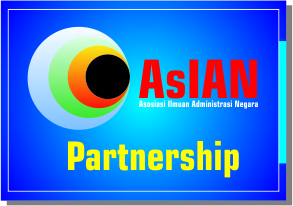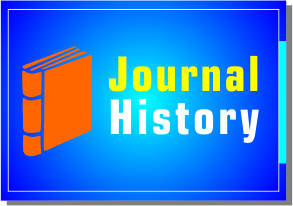Strategi Unggul Penguatan Kapasitas Logistik Perdagangan: Rencana Lima Tahun 2024-2029
DOI:
https://doi.org/10.31334/transparansi.v7i2.4328Keywords:
Kapasitas Logistik, Logistik Perdagangan, Strategi UnggulAbstract
Increasingly fierce global economic competition requires countries to develop effective trade strategies. In 2023, Indonesia improved its competitiveness ranking from 44th to 34th place according to the IMD Global Competitiveness Index. However, this position is still below Malaysia (27th) and Thailand (30th). This research uses a mixed quantitative and qualitative approach to analyze competitiveness indicators such as technology, health, labor market, and financial system. SWOT analysis was used to identify strengths, weaknesses, opportunities and threats in Indonesia's trade strategy. Critical success factors (CSF) analysis was used to structure information needs in the management hierarchy. By considering the general and specific conditions of Indonesia's trade logistics, a trade policy and strategy can be formulated. The trade strategy obtained from SWOT and CSF analysis is: 1. Strengthening downstream trade policies, 2. Strengthening multi-sectorregulatory stakeholder cooperation, in integrated logistics and trade marketing policies, 3. Accelerating digitalization and developing a competitive logistics service ecosystem, 4. Reorganizing trade logistics systems and facilities and infrastructure.Therefore, accurate and strategic trade planning is essential to improve economic efficiency and effectiveness, as well as competitiveness in the global market.References
F. Y. Afif dan U. Ciptawaty, “Daya Saing dan Pertumbuhan Ekonomi Negara Berkembang ASEAN,†J. Ekon. Pembang., vol. 9, no. 1, hal. 37–44, 2020, doi: 10.23960/jep.v9i1.85.
I. Malik, “Strategi Perencanaan Dan Pengembangan Bisnis Dalam Menghadapi Perdagangan Bebas Masyarakat Ekonomi Asean,†Negot. J. Ilmu Adm. Bisnis, vol. 3, no. 1, hal. 39, 2020, doi: 10.29103/njiab.v3i1.3051.
H. Supratikta, M. A. S.S., I. R. Rachmawati, dan T. H. Hanrio, “Analisis Demografi dalam Meningkatkan Kompetensi dan Produktivitas Industri Perdagangan Berbasis KKNI dalam Perencanaan SDM,†J. Ekon. dan Bisnis, vol. 4, no. 1, hal. 50–67, 2024, doi: 10.56145/ekonomibisnis.v4i1.136.
F. R. David, Strategic Management: Concepts and Cases. New Jersey: Prentice Hall, 2011.
M. Benned, Y. Pahala, P. Candra Susanto, dan S. Tinggi Penerbangan AVIASI, “Optimization of Pioneer Cargo Plane and Sea Highway on National Logistics Distribution Optimalisasi Pesawat Cargo Perintis dan Tol Laut Terhadap Distribusi Logistik Nasional,†J. Ilm. Kedirgant., vol. 17, no. 2, hal. 66–80, 2020.
P. S. Johnson Kennedy, “Analisis Tingginya Biaya Logistik Di Indonesia Ditinjau Dari Dwelling Time,†J. Econ. Resour., vol. 1, no. 2, hal. 136–145, 2019, doi: 10.33096/jer.v1i2.161.
G. von Krogh, I. Nonaka, dan M. Aben, “Making the Most of Your Company’s Knowledge: A Strategic Framework,†Long Range Plann., vol. 34, no. 4, hal. 421–439, 2001, doi: 10.1016/s0024-6301(01)00059-0.
U. Silalahi, Metode Penelitian Sosial. Bandung: PT Refika Aditama, 2015.
W. L. Neuman, Social Research Methods: Qualitative and Quantitative Approaches. Pearson Education, 2014.
J. W. Creswell, Research design : qualitative, quantitative, and mixed methods, 4 ed. California, USA: Sage Publications, Inc., 2014.
S. Nurhasanah dan R. Vikaliana, Statistika Sosial, 1 ed. Jakarta, Indonesia: Salemba Empat, 2021.
M. A. Benzaghta, A. Elwalda, M. Mousa, I. Erkan, dan M. Rahman, “SWOT analysis applications: An integrative literature review,†J. Glob. Bus. Insights, vol. 6, no. 1, hal. 55–73, 2021, doi: 10.5038/2640-6489.6.1.1148.
K. Laosethakul, Critical Success Factors for E- commerce in Thailand: Cultural and Infrastructural Influences. . 2007.
M. a. Monro, Planning, Critical Success Fctors, and Management’s Information Requirements. MIS Quarterly, 1980. doi: 10.2307/248958.
W. Latunreng, A. L. Arifin, dan R. Vikaliana, Budaya Organisasi. Bogor: IPB Press, 2021.
R. S. Kaplan, Balanced Scorecard, 1996 ed. Jakarta: Penerbit Erlangga, 2000.
B. Sitorus Sekretariat Jenderal Kementerian Perhubungan dan T. Irfan Harsono Sitorus Badan SAR Nasional, “Dukungan Transportasi Logistik Dan Daya Saing Indonesia Dalam Menghadapi Masyarakat Ekonomi Asean the Support of Logistics Transportation and Indonesian Competitiveness in Dealing With Asean Economic Society,†J. Manaj. Transp. Logistik, vol. 04, no. 02, hal. 137–146, 2017.
D. C. North, “Location Theory and Regional Economic Growth,†J. Polit. Econ., vol. 63, no. 3, hal. 243–258, 1955, doi: 10.1086/257668.
A. Akmaliza et al., “Geopolitik Indonesia,†J. Ris. Pendidik. dan Pengajaran, vol. 1, no. 2, hal. 92–109, 2022, doi: 10.55047/jrpp.v1i2.217.
J. Ram dan D. Corkindale, “How ‘critical’ are the critical success factors (CSFs)?: Examining the role of CSFs for ERP,†Bus. Process Manag. J., vol. 20, no. 1, hal. 151–174, 2014, doi: 10.1108/BPMJ-11-2012-0127.
Downloads
Published
Issue
Section
License

This work is licensed under a Creative Commons Attribution-ShareAlike 4.0 International License
Please find the rights and licenses in Transparansi : Jurnal Ilmiah Ilmu Administrasi By submitting the article/manuscript of the article, the author(s) agree with this policy. No specific document sign-off is required.
- License
The commercial use of the article will be governed by the Creative Commons Attribution license as currently displayed on Creative Commons Attribution-ShareAlike 4.0 International License.
2. Author(s)' Warranties
The author warrants that the article is original, written by stated author(s), has not been published before, contains no unlawful statements, does not infringe the rights of others, is subject to copyright that is vested exclusively in the author and free of any third party rights, and that any necessary written permissions to quote from other sources have been obtained by the author(s).
3. User Rights
Transparansi : Jurnal Ilmiah Ilmu Administrasi spirit is to disseminate articles published are as free as possible. Under the Creative Commons license, Transparansi : Jurnal Ilmiah Ilmu Administrasi permits users to copy, distribute, display, and perform the work for non-commercial purposes only. Users will also need to attribute authors and Transparansi : Jurnal Ilmiah Ilmu Administrasi on distributing works in the journal and other media of publications.
4. Co-Authorship
If the article was jointly prepared by more than one author, any authors submitting the manuscript warrants that he/she has been authorized by all co-authors to be agreed on this copyright and license notice (agreement) on their behalf, and agrees to inform his/her co-authors of the terms of this policy. Transparansi : Jurnal Ilmiah Ilmu Administrasi will not be held liable for anything that may arise due to the author(s) internal dispute. Transparansi : Jurnal Ilmiah Ilmu Administrasi will only communicate with the corresponding author.
5. Miscellaneous
Transparansi : Jurnal Ilmiah Ilmu Administrasi will publish the article (or have it published) in the journal if the article’s editorial process is successfully completed. Transparansi : Jurnal Ilmiah Ilmu Administrasi editors may modify the article to a style of punctuation, spelling, capitalization, referencing and usage that deems appropriate. The author acknowledges that the article may be published so that it will be publicly accessible and such access will be free of charge for the readers as mentioned in point 3.
Every accepted manuscript should be accompanied by "Copyright Transfer Agreement"prior to the article publication.

.jpg)










